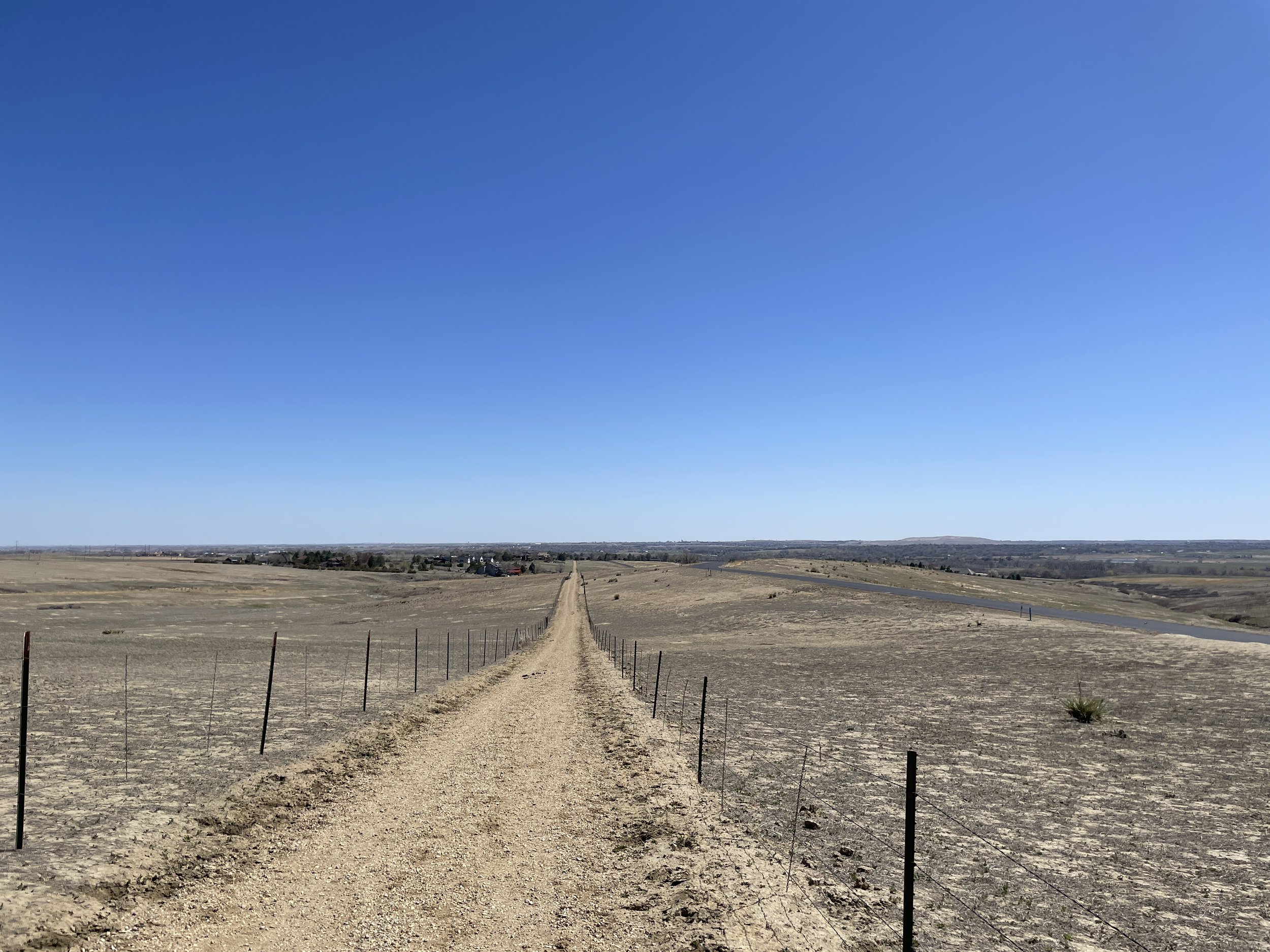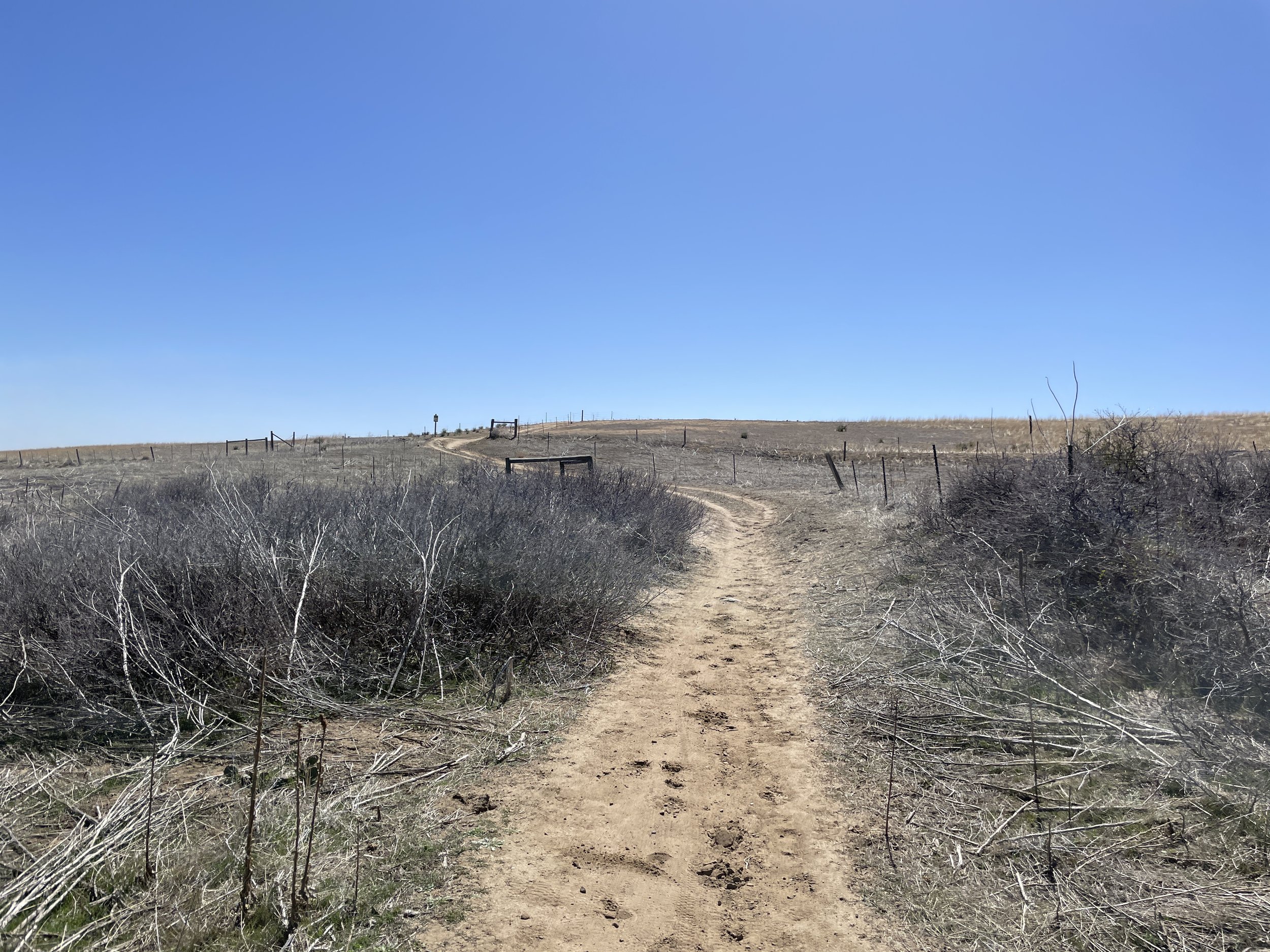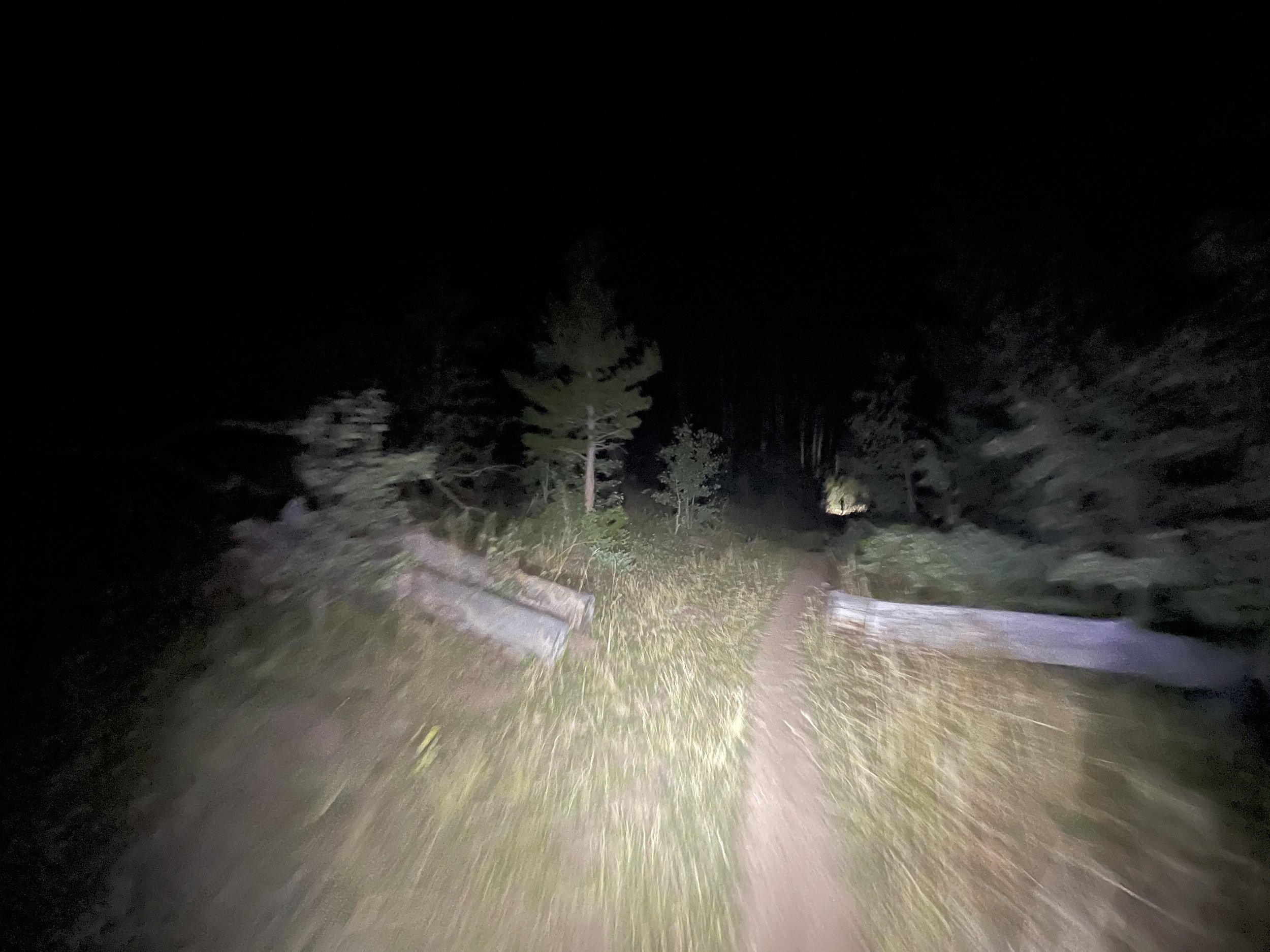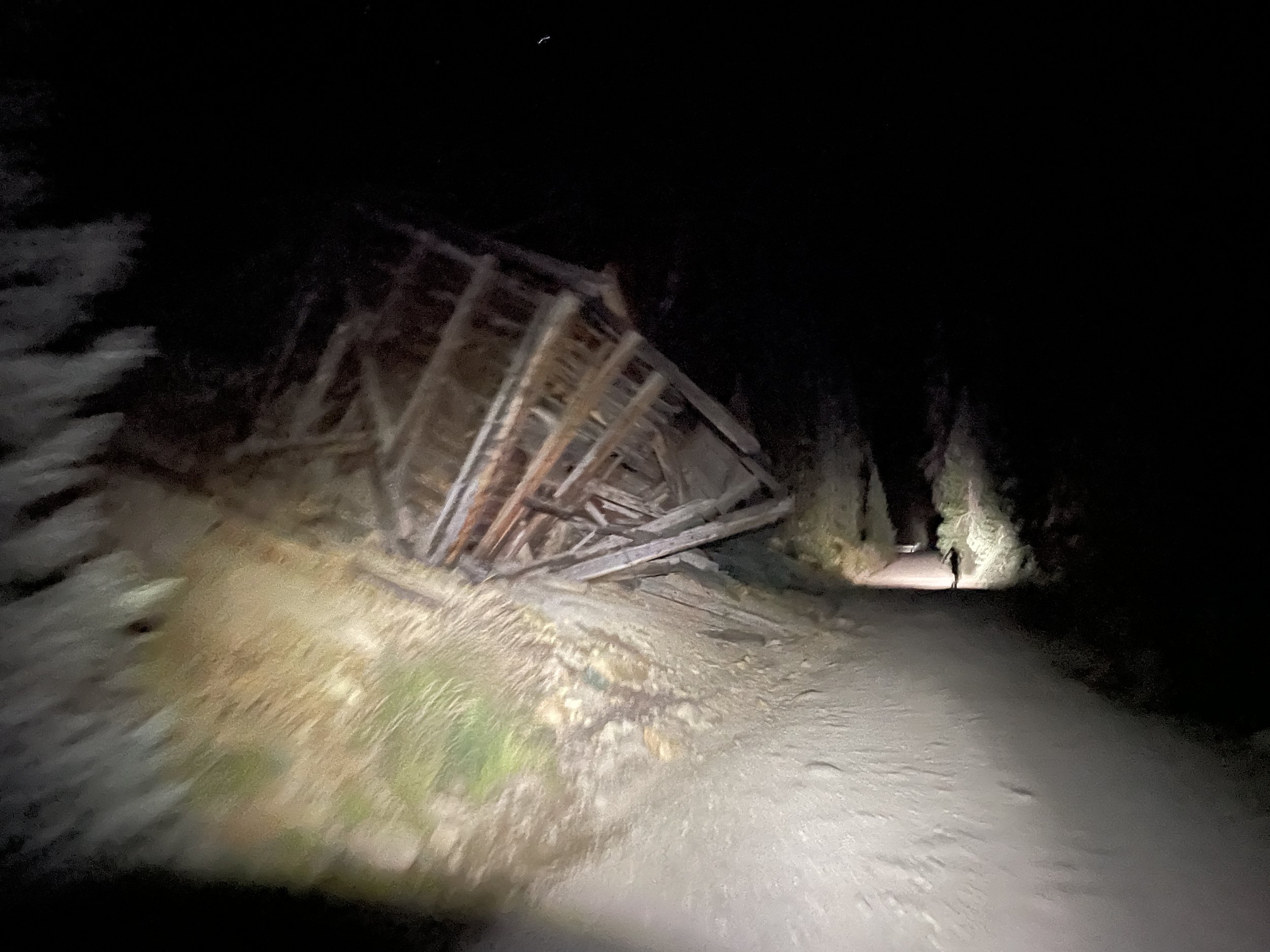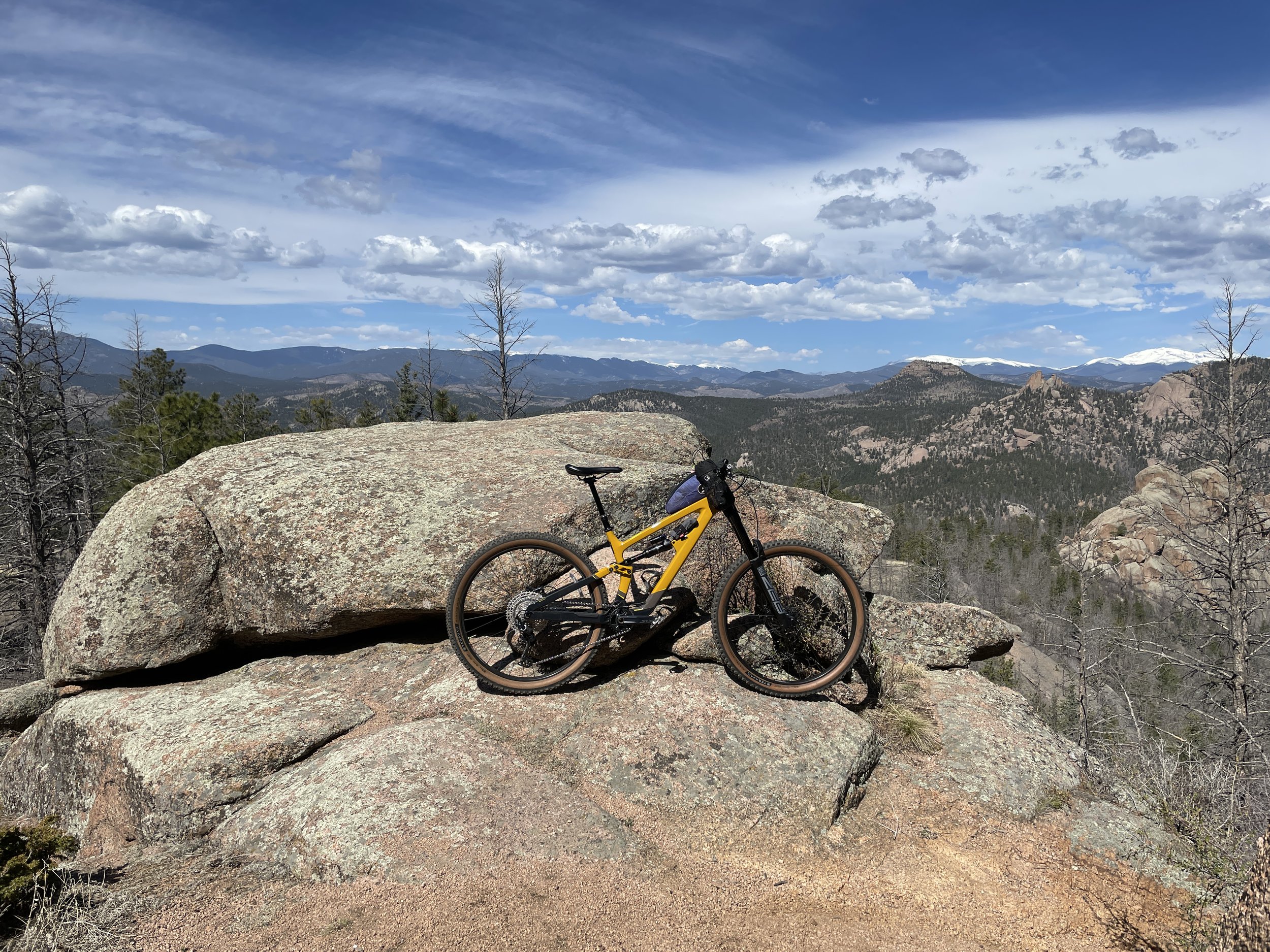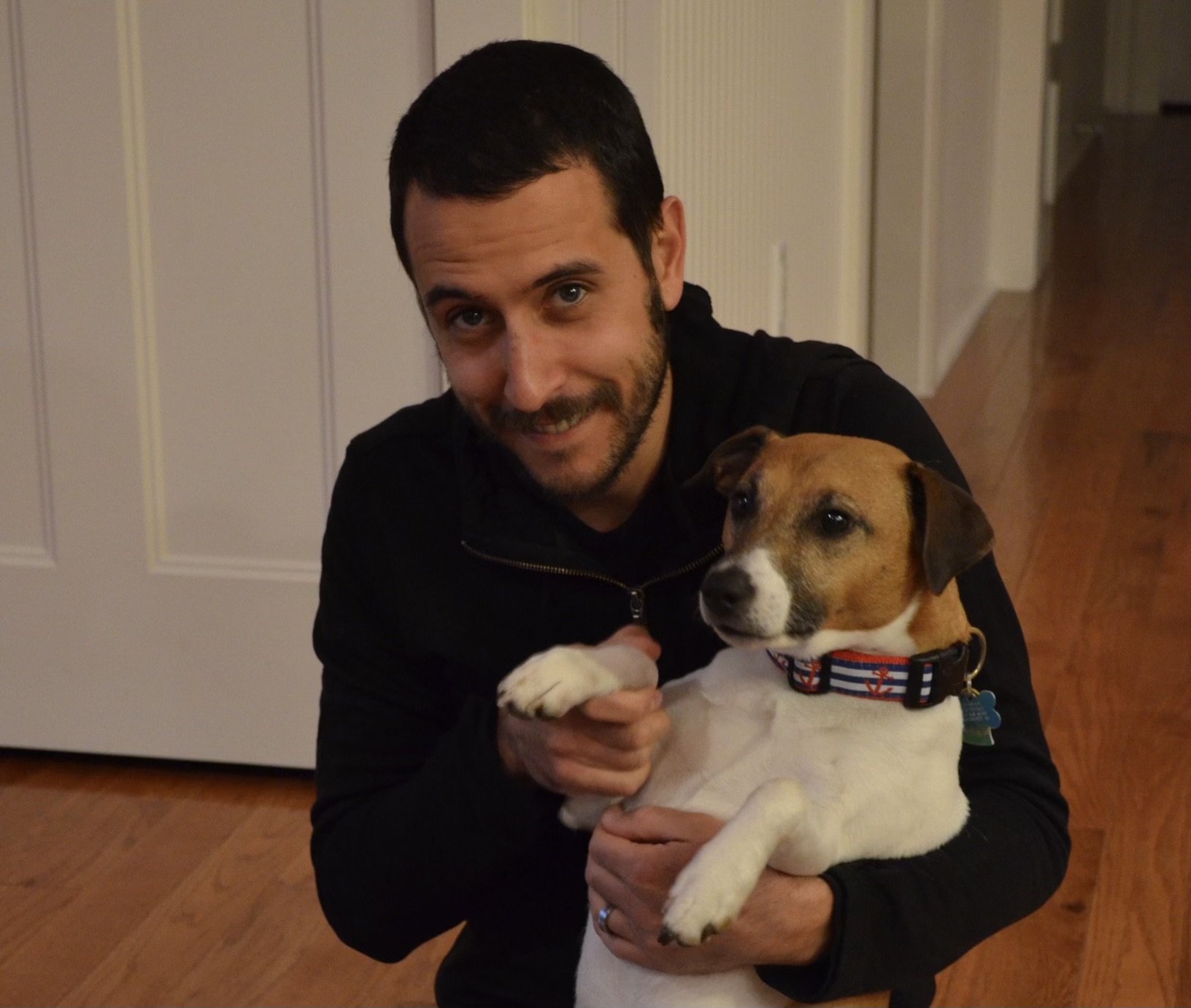Have you ever wondered what it feels like to bicycle around the entire Earth? To measure the vastness of continents through the rhythm of your own effort? To grasp how immense—and yet how small—this water-covered rock truly is? To witness countries, cultures, languages, and cuisines as they transform and change, and blend, until you’ve finally completed a full circuit and are back to where you started?
(Insert PolarSteps maps)
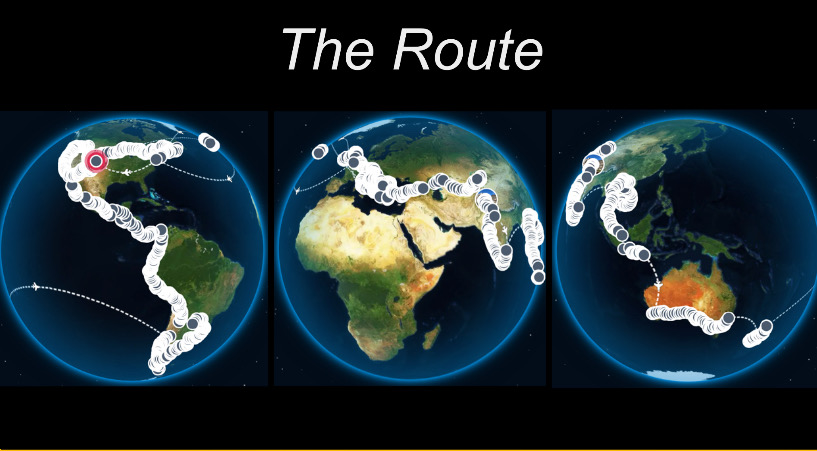
The journey of 50,000 miles begins with a single pedal stroke. To quote world cyclist, Alastair Humphreys,
“For I now know that the hardest part of most adventures is summoning the nerve to begin, to just make it happen. The rest usually takes care of itself. “
On April 27th, 2019, all the preparations are made. The panniers are packed to the best of my ability. I meet with friends Lee and Pam and their road bikes near our 88th and Wadsworth townhome. My wife, Kendra, also joins for the start of the ride north. I don't know if I have enough money saved to complete the trip. I had never even been on an overnight bicycle trip before. And here I am, planning to attempt going around the world on a bicycle. Going for it, to see what happens.
(Insert opening day photo)
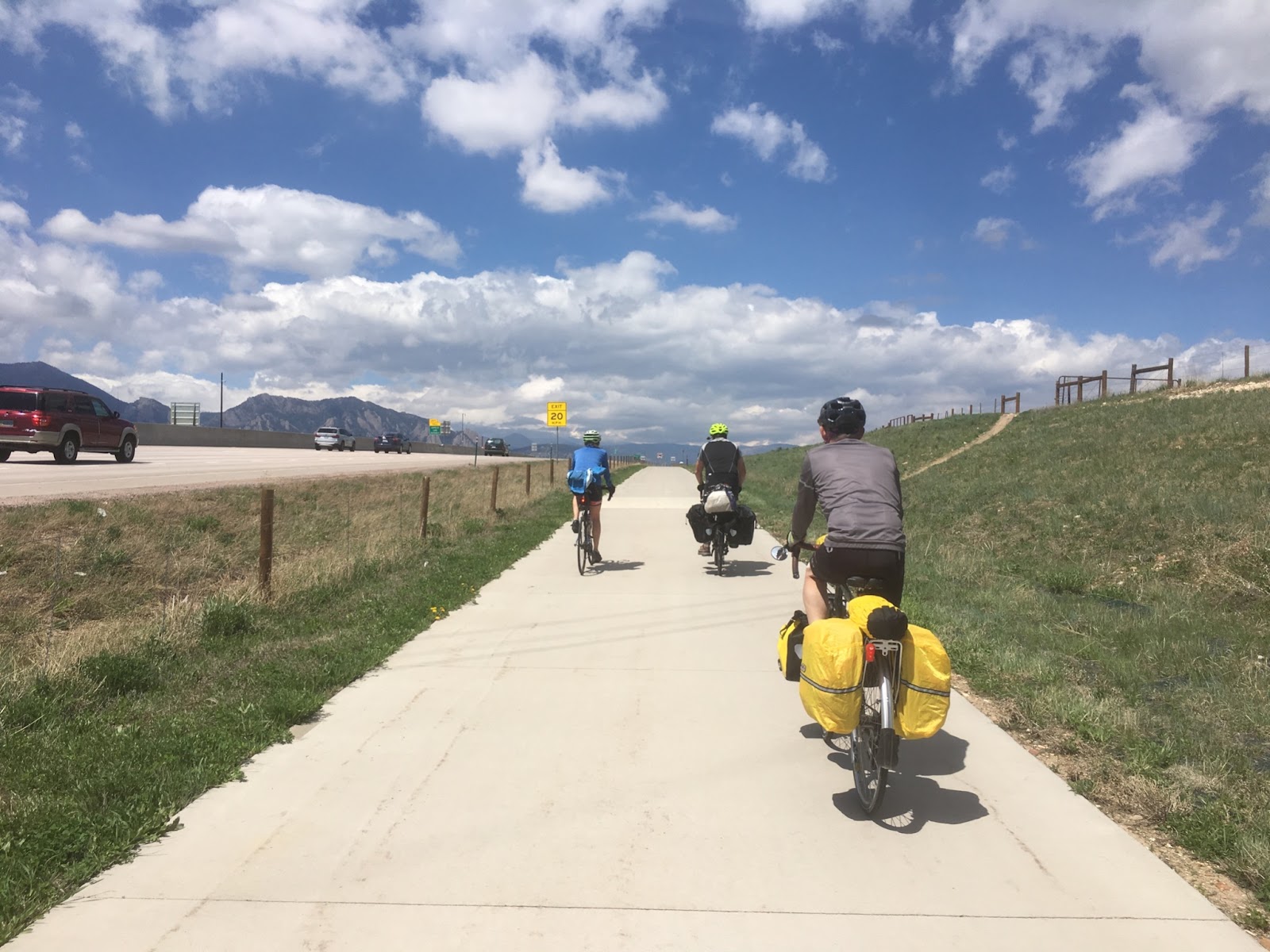
The back story is that I had wanted a break in my career. Perhaps a complete break. I had been on the corporate treadmill for a few decades. I was, “neither old nor young.” In India they call it the age of vanaprastha, the “forest walk”, when one is no longer burdened by the need to educate oneself or build a household, but is not yet ready to renounce an active life. I moved to Colorado in 1999 with a passion for mountain climbing. I had lived in 10 different states at that point, for reasons of education and work, and was tired of moving. Colorado offered the largest and most diversified job market in the United States next to the high summits of a folded mountain range with stable year-round weather. My dream was to use Colorado as a training ground to some day climb some of the highest mountains in the world.
My wife Kendra and I made a good run of it. We climbed together in the Alps, the Andes, in Canada, the Tetons, Rainer, Yosemite. We summited all of the Colorado 14ers together. But the world is always changing. And dreams change with it.
In the summer of 2011, I took a fall on the east face of Longs Peak and was helicoptered out with a talus bone fracture. My ankle would never be the same again. I acquired my first Trek road bicycle to work through the scar tissue. My career was relatively stable for a long period, but in 2016 I was given the tap on the shoulder and escorted to a room where HR informed me that my job had been relocated to Austin, Texas. I accepted a severance package worth six months of my normal annual salary and soon cycled through a different job in each of the next three years. I told Kendra at that time, “You know, the next layoff, when it happens, I want to take some time before heading straight back into the corporate job market.” The quote is attributed to Einstein that 'Insanity is doing the same thing over and over again and expecting different results.' Sometimes when you are stuck in a bad pattern that appears to be repeating, shaking the “snow globe” and watching where the flakes freshly land is about as good a strategy as any.
“Go!” Kendra told me. “Come back better.” She knew first hand that I was struggling emotionally. I researched what dream mountain in the Himalaya I would try to climb and discovered the costs had skyrocketed over the course of my lifetime. I started watching “See the World” on YouTube by Iohan Gueorguiev, and was following 23 year old Instagrammer Fredrika Ek from Sweden as she circled the world by bicycle in just over 1000 days. I read Alastair Humphreys who chronicled traversing all of the continents by bicycle between 2001-2005. Traveling to mountains internationally for climbing had given both Kendra and I an appreciation for all of the experiences in and around the central focus of climbing that we admitted were often more enjoyable than the climbing itself. I started to calculate the cost of going around the world on a bicycle. Two to three years could be done in such a way as to roughly equal the cost of just one guided, permitted Himalayan mountain over 8,000 meters for three months with only a 50% chance of success. When the predictable layoff finally came I called Kendra and said, “OK. It’s time to buy a bicycle.”
We traveled down to Yawp! Cyclery in Edgewater and I purchased a brand new black Surly Disc Trucker I named “Morpheus”, because I was taking the red pill, and seeing how far down the rabbit hole goes.
(Insert picture of Morpheus)
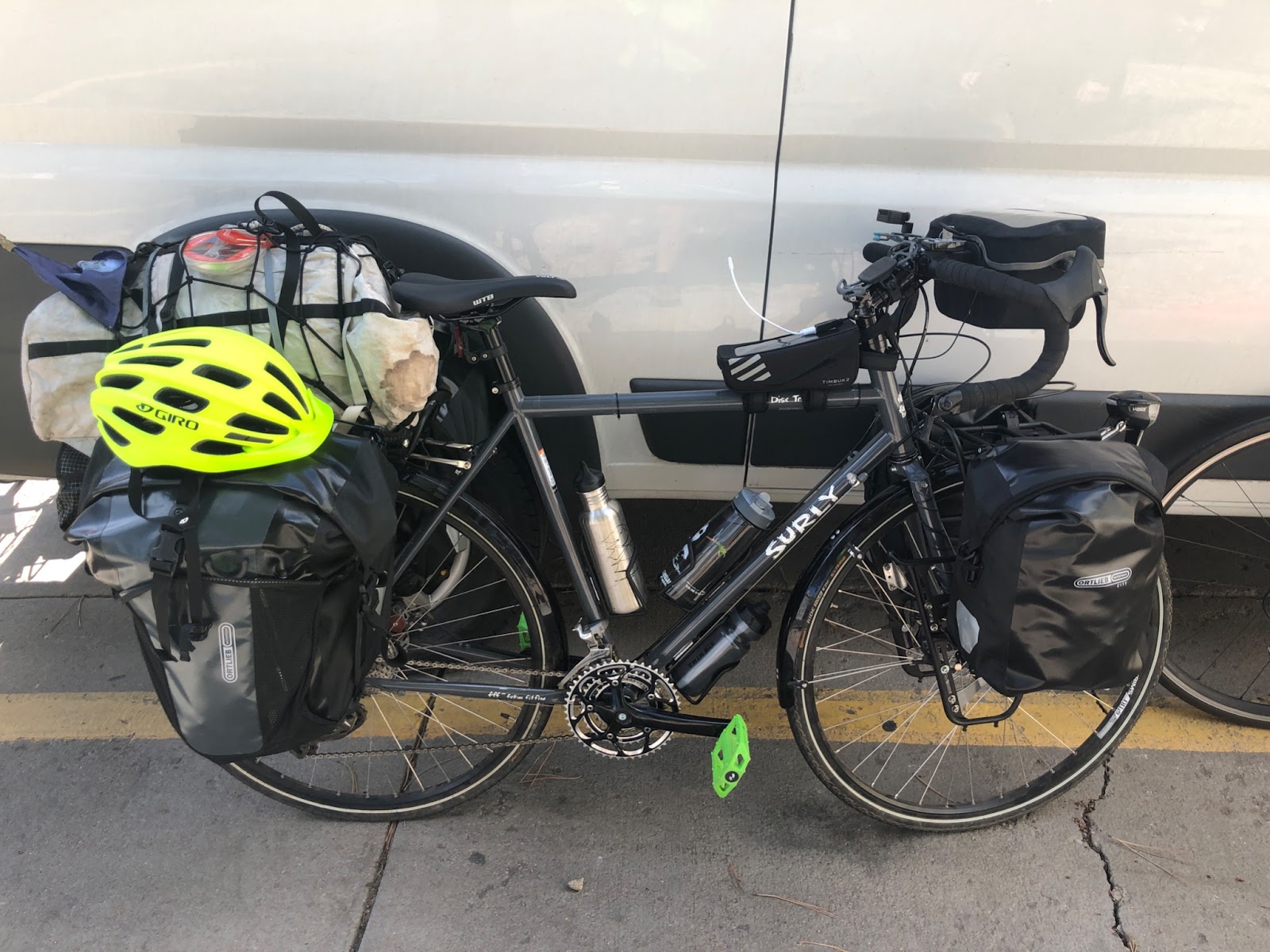
That first summer I started up towards South Dakota with a plan to ride the “Northern Tier” into eastern Canada, the part of Canada I had never seen before. The plan in North America was to mostly wild camp, but to use the warmshowers.org network every four days or so to get access to a shower and a plug. (Most of my hosts over the years have since become social media friends that I still stay in touch with). At the Cadillac Carhenge art installation in Nebraska, Kendra called me to say she missed me already, “Come up for the weekend! Carhenge is still within driving distance from Denver!”
I don’t want to go into the details, but let's say we went into nearby Alliance to get some groceries. We put Morpheus up on the rack of Kendra’s Subaru so we could clean and oil the chain. On the way back to our campsite I watched in horror through the rearview mirror as Morpheus fell off the Subaru and landed on the highway, losing the seat, breaking both rims, and twisting the handlebars into complete unusability. I was only one week into the trip. We returned to Yawp! Cyclery for $1,500 of major surgery. Kendra drove me and Morpheus back to the scene of the accident one week later. It is a testament to Quality Bikes and Surly that even after the accident, Morpheus carried me for over 50,000 miles without frame cracks. It would turn out to be the most reliable piece of gear in my kit during my almost entire 4 years of bicycle travel.
From Carhenge the road took me to the Needles of South Dakota, through the badlands where I camped in the middle of a herd of wild bison in late season flooding. From Custer I turned east towards Minnesota, where my ancestors emigrated from Europe. I cycled up around Lake Superior, and was advised to travel through the Upper Peninsula of Michigan rather than take the Trans Canada Trail north where the “trail” is the shoulderless trans-Canada highway with trailer trucks blasting past at 80 miles per hour.
(Insert photo of wild bison)
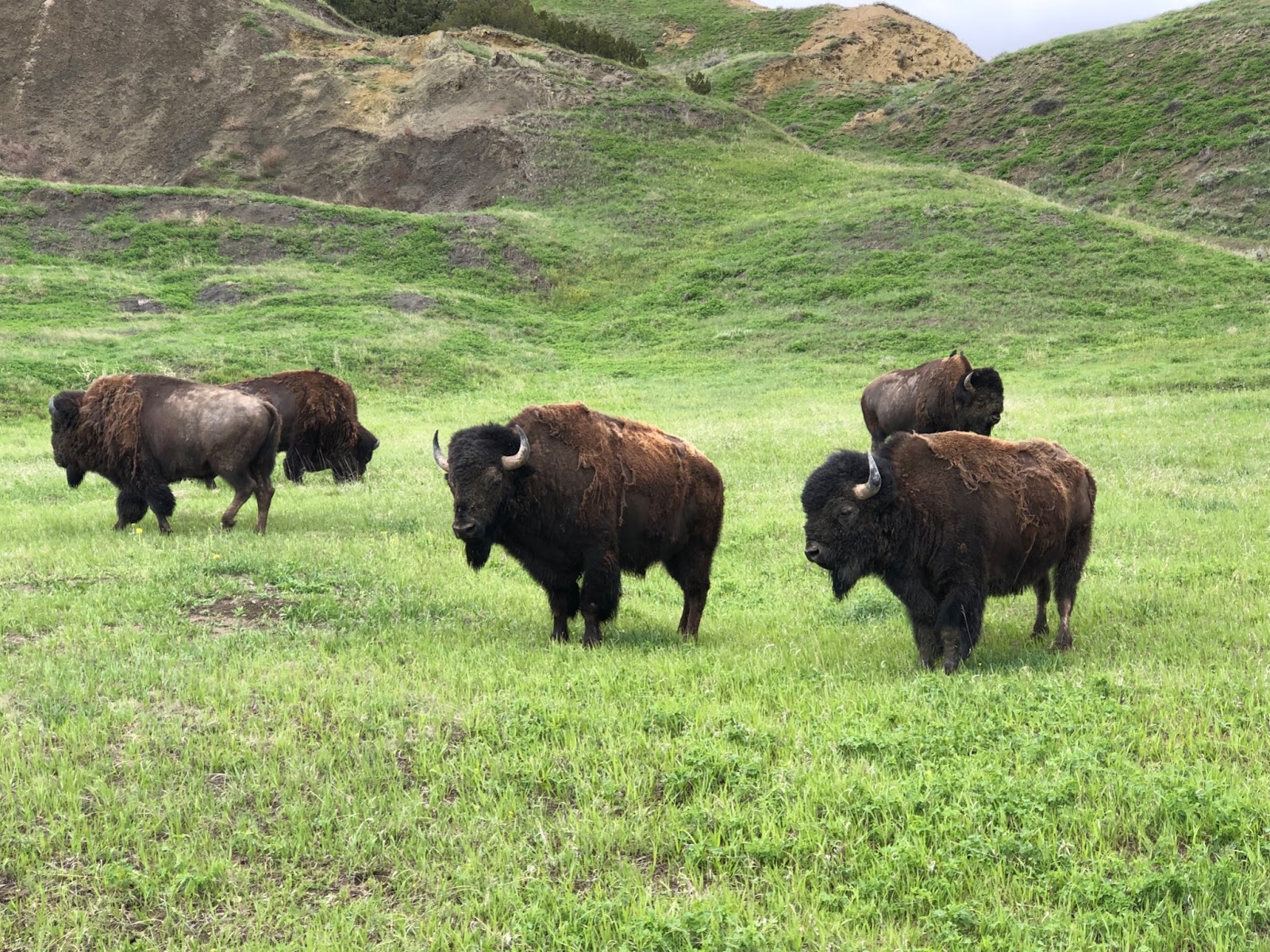
I crossed into Canada at Sault Ste. Marie, Ontario and continued past some of the worst mosquito and black fly infestations I had ever experienced. Amish and Mennonite farms and yellow canola fields, a ferry ride across Lake Huron to Tobermory, down to Greater Toronto, to Union Loyalist, Ontario where the British mass-migrated after their losses in the American war of Independence. I enjoyed free camping along the Ontario canal system to Ottawa, up into Quebec along the Petit Train du Nord rail trail system, down to Monreal, across the Chemin du Roy trail to Quebec City, entering into New Brunswick with its Acadian French culture, to the extensive bike trail system of Prince Edward Island. On to Nova Scotia and Cape Breton Island, before a ferry to Newfoundland where they speak one of the most difficult dialects of English I have ever encountered. From Newfoundland, I reversed down through Nova Scotia to Maine, joined for a while by my friend Erick Barros from the Dirtbag Climber’s Coalition in Georgia, to wind up in Providence, Rhode Island with a one way ticket to Ireland.
(Insert photo of crossing the Canadian border)
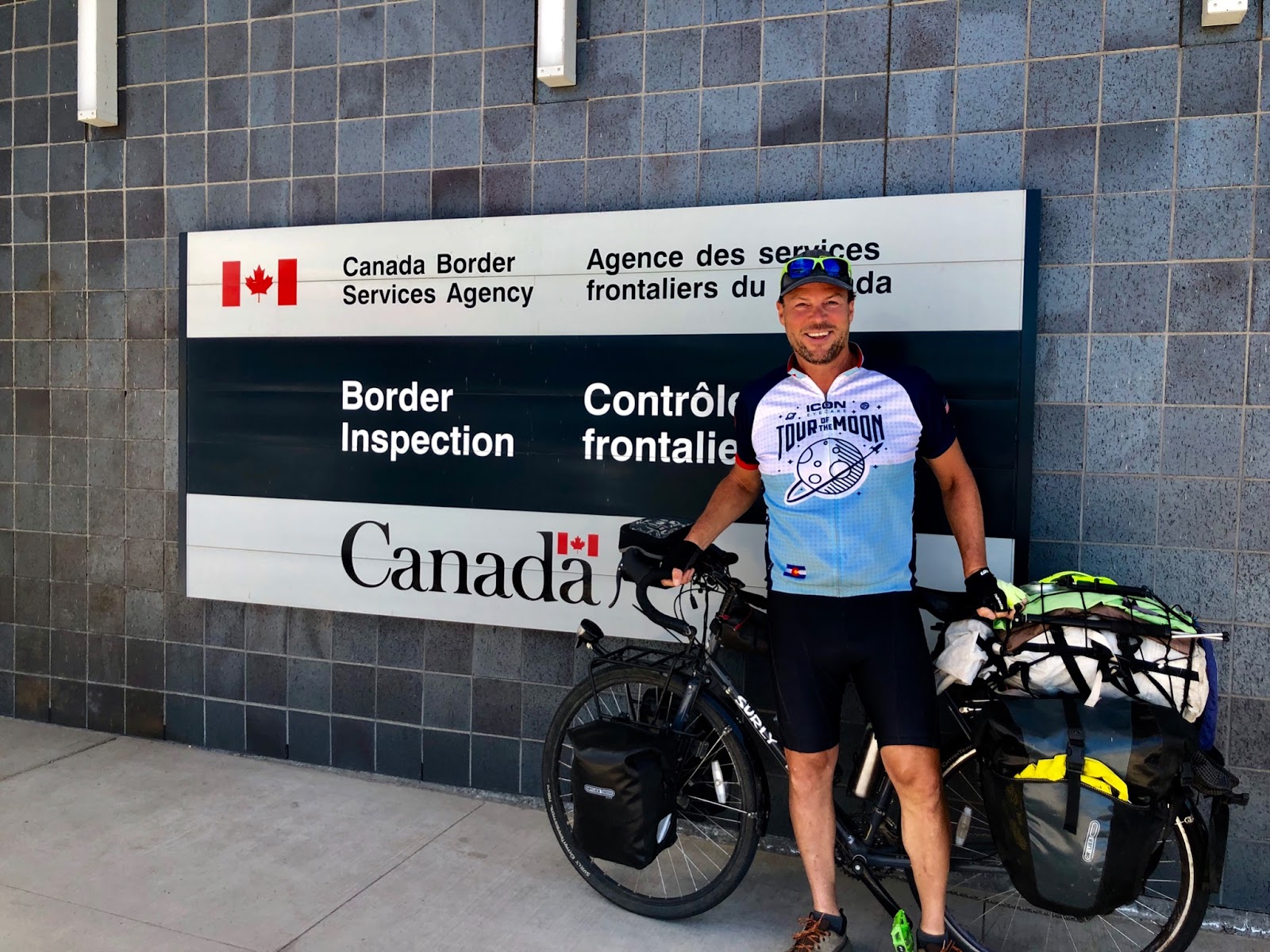
Irish west coast. My friend Ian puts me up in a Dublin hotel for my first Irish breakfast and as a mental buffer to the disorientation of riding along the left hand side of the road for the first time. Ring of Beara, Ring of Kerry, Ring of Dingle. I've always seen rain riding as a skill, but this was new—a torrential coastal mist that saturates every inch of fabric until you give up on staying dry. Up to Galaway and back over to Dublin before turning north towards Belfast. A ferry to Scotland, Glasgow, a ride up to Fort Williams. A hike up UK highpoint Ben Nevis, over and down through the Cairngorms to meet Kendra in gothic Edinburgh where she joined me on a borrowed bicycle from our friend Shirl for the ride into England. Down to Newcastle on Tyne together, rejoining our long time friends Ian and Shirl in Leeds before exploring London. Kendra heads home and my solo trip continues, on to Dover and the ferry to Dunkirk.
Continental Europe, in retrospect, is a blur. I had never been. Castles, cathedrals, town squares, vineyards, rolling farm fields. I crossed through Belgium and the Netherlands where bicycle lanes are next to every road. Past windmills into Germany and the paved bikeways along the castle-topped cliffs of the Rhine. After meeting a past exchange student and friend Boris Bromm in Frankfurt, I headed along the Main river into the Czech republic past the iron curtain. Then Slovakia, Austria, Hungary, around the Alps through the cold winter red beech forests and milky green rivers of Slovenia. Down to Trieste, Italy and a month of cycling down to the heel of the boot. I spent Christmas in the Puglian town of Bari and realized I could spend every Christmas for the rest of my life in Italy. The ‘Natale’ is two uninterrupted weeks of dolce vita, honking and hugging and friends and beers and espresso and pastries and seafood and salutations, “Buon Natale!”
(Insert photo of crossing into Italy)
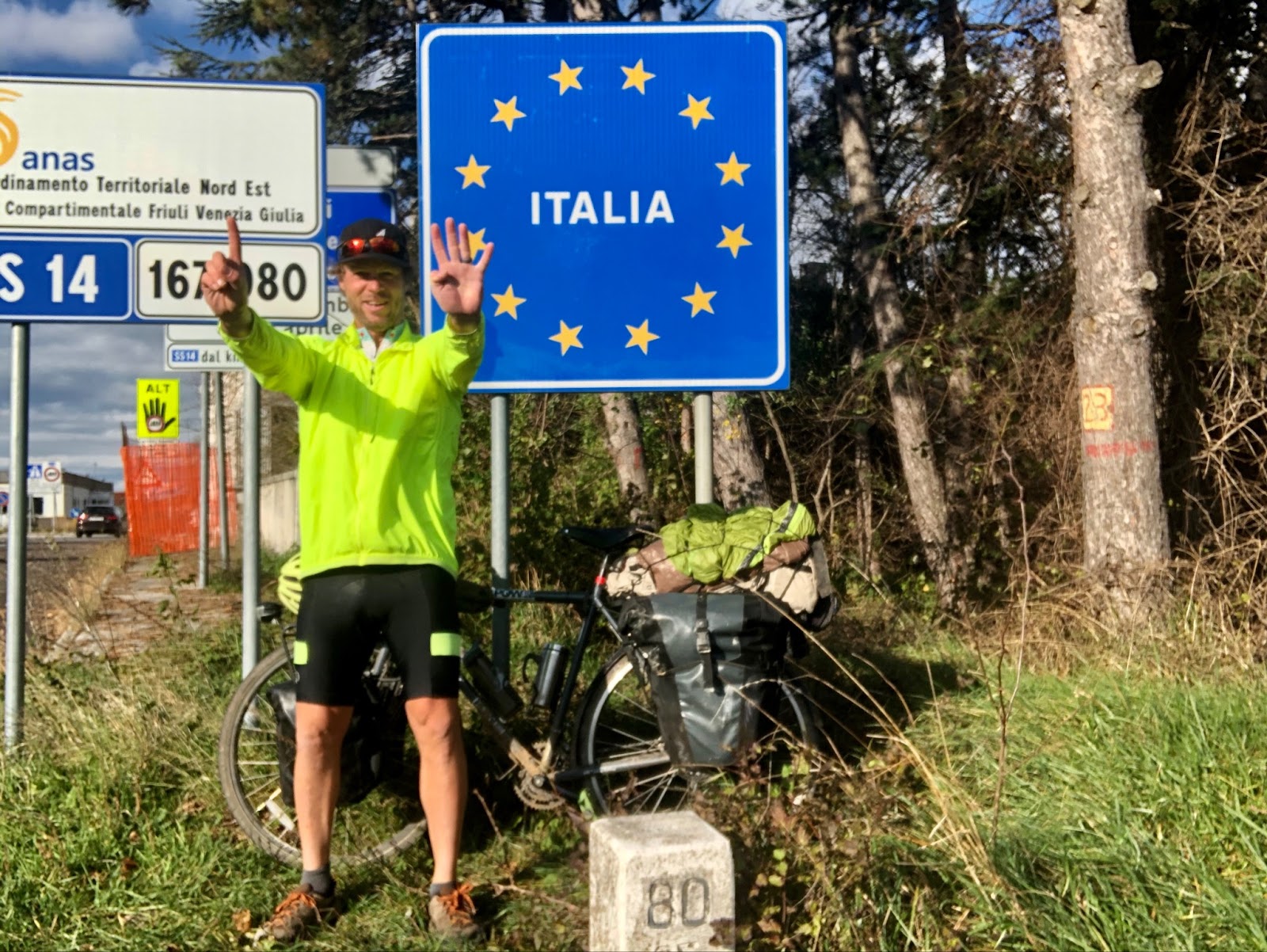
At Brindisi, Italy I caught another overnight ferry to Igoumeniza, Greece and escaped my 90 day limit in the contiguous “Schengen” countries of Europe. From Greece I headed north again through the white stone Venetian fortresses and Byzantine cathedrals of the Dalmatian coast of Albania, Montenegro, and Croatia. Then east into Bosnia & Herzegovina, through war ravaged regions into Serbia before following the Danube with its loose dogs and trash and makeshift Romani villages all the way down to the Black Sea. On the Serbian border with Romania, the television started to warn of a global virus and the need to wear a mask outdoors. Ebi Andrei, a Romanian border guard who invited me to stay with his family along the way, called to warn me, “Ted! Get to Bulgaria! They are closing the Romanian border tomorrow!”
By the time I reached the Bulgarian border just south of Bucharest, the border guards were wearing makeshift Hasmat suits and only let me through because I was a foreign tourist. I raced through Bulgaria trying to reach Turkey before all the borders closed. I arrived one day too late. On the ride to Turkey, people in the street shouted at me, “It’s closed! It closed yesterday!”
There was nothing to do but retreat to the coastal city of Burgas, Bulgaria and wait for the pandemic to subside, and for the borders to reopen again. I was there for three months. We all know what happened. After watching the number of planes departing from the Sofia Airport dwindle down to only six per day, and with no promise of a tourist visa renewal after three months, I loaded up Morpheus, rode through the armed highway checkpoints with my US passport, reached Sofia in 4 days and took one of the last remaining expensive flights home to Colorado.
(Insert photo at the monument to the Soviet friendship in Varna, Bulgaria)
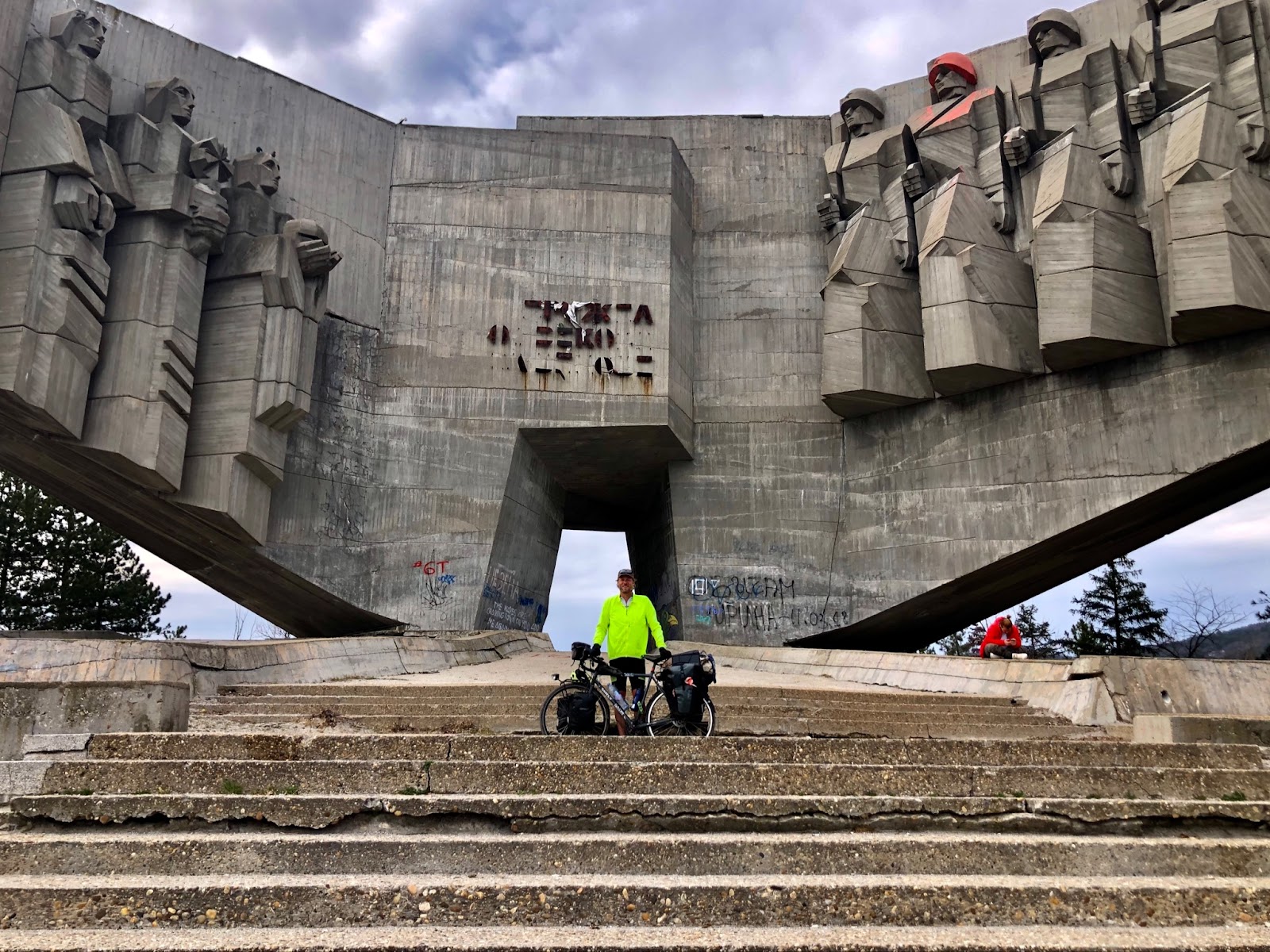
I didn’t want the ride to end this way. I immediately fell into depression. My wife suggested I bicycle out to Oregon and spend some time with my brother in Portland. I thought someday I would want to ride US highway 1 down the coast from the Canadian border to the Mexican border. Getting trapped within the United States provided the pretext to do it now. I rode up to Glacier, experienced one of the world’s most beautiful descents down ‘Going to the Sun Road’, rode out to the Peace Arch on the Washington/Canada border, headed down the Oregon Coast which (in my opinion) is also one of the most beautiful coastlines of the world, through the sublime empty Redwoods in forest fire season, Golden Gate Bridge, Big Sur, Los Angeles, Tijuana river estuary before smoldering back through the California and Arizona deserts feeling like I was spending too much on this “expensive side trip” when crossing Asia remained the financial priority. When I returned home I rotted, and ate, and grew heavy, and waited for borders to finally reopen again. In April of 2022 it was finally time. My wife and I booked a trip together to Athens.
(Insert photo of Going to the Sun road)
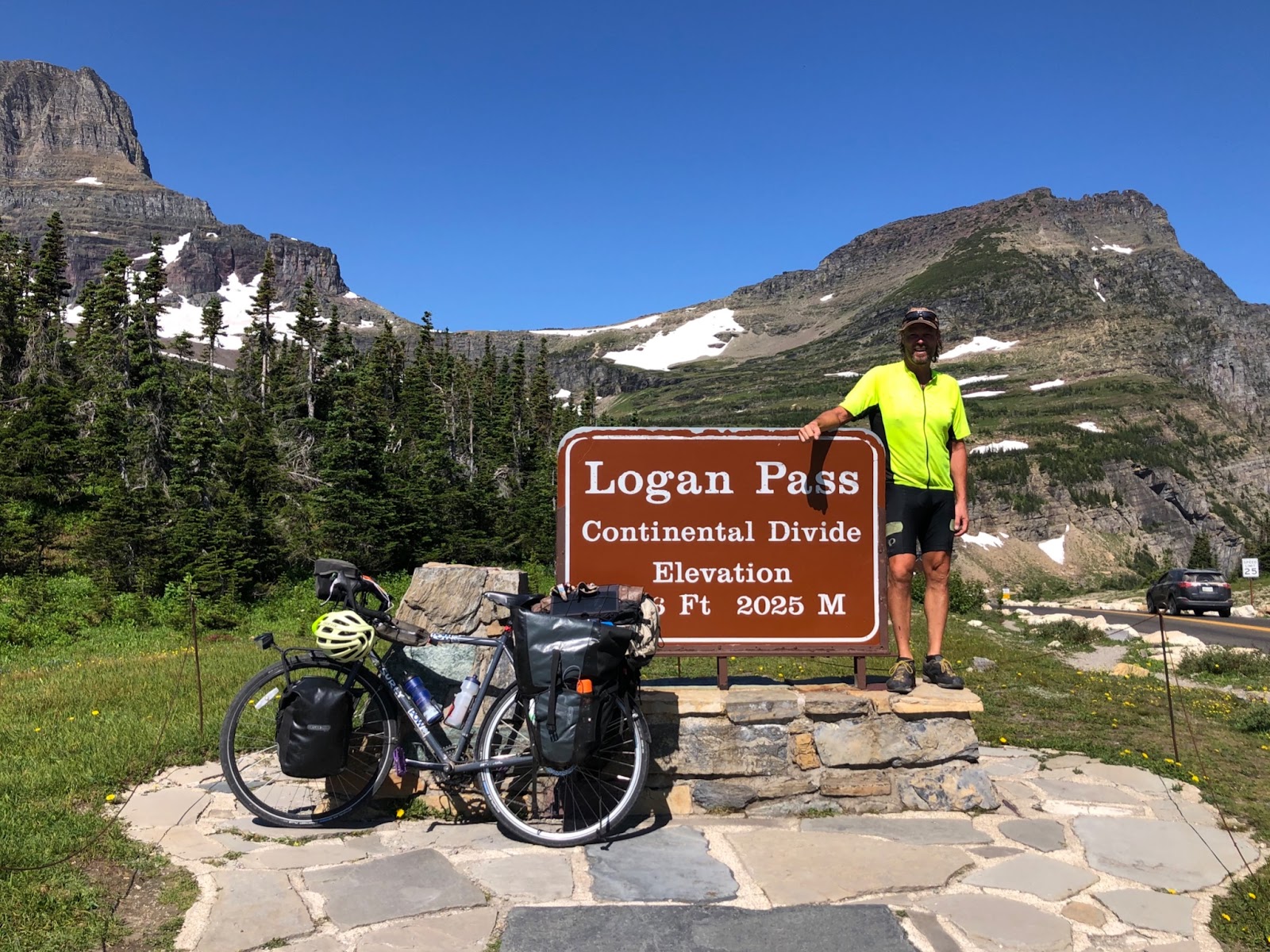
From Athens we ferried to Turkey and rode to the ancient library of Ephesus. We explored Istanbul together under the sounds of the adhan ringling out five times each day. Kendra returned home and I continued on a path that took me across Turkey, into Georgia, a flight from Tbilisi to Aktau, Kazakhstan (because the land border crossing into Azerbaijan still remains closed). In Beyneu, Kazakhstan I waited for two weeks among the camels, dodging locals who wanted to “invite” me to drink vodka (and pay for it all), for a space on a train ride into Uzbekistan (due to a curfew and lockdown in the semi-autonomous region of Karakalpakstan). Traveling through Uzbekistan, I explored the ancient Silk Road cities of Khiva, Bukhara, and Samarkand before crossing the rugged high-brown lower passes of the 24,000-foot peaks in Tajikistan and Kyrgyzstan. From there, I returned to the vast, flat steppes of Kazakhstan, reaching the Chinese border at Korgas, which remained closed due to China’s 'Zero COVID' policy.
(Insert photo in front of the Madrasas of Samarkand)
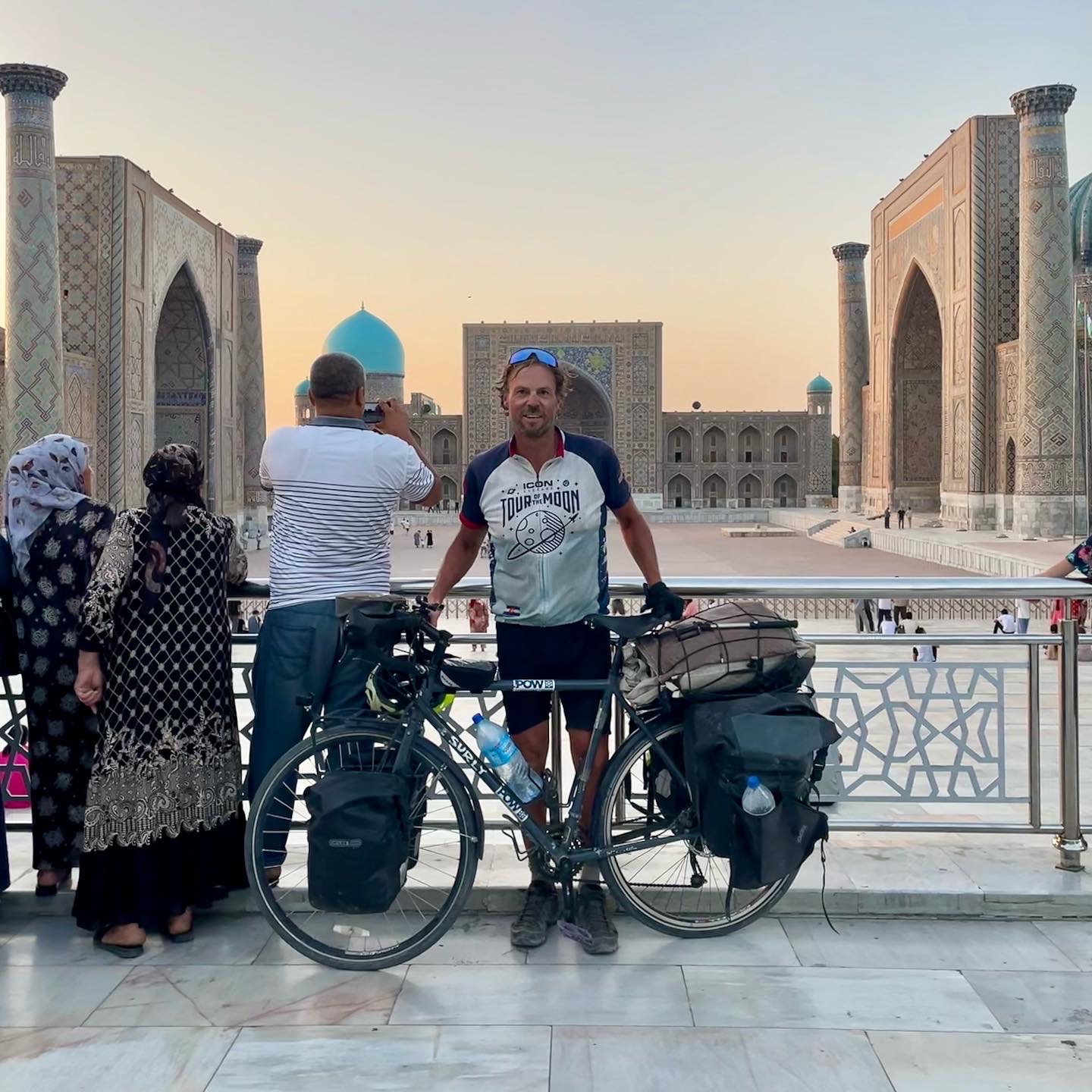
From Almaty I flew to Delhi, then to Leh in the remote, culturally Tibetan Himalayan province of Ladakh, India. Then descended 11,000 ft down Zoji La pass through Muslim Kashmir into Himachal Pradesh and the home of His Holiness the 14th Dalai Lama, where I learned the meaning of life. I continued through Sikh Punjab and its Golden Temple at Amritsar, through filthy, crowded, polluted Uttar Pradesh around Delhi, into architecturally gorgeous Rajasthan, Gujarat, Maharashtra, Goa, Karnataka, Kerala, and finally Tamil Nadu, the most intensely colorful culture I’ve ever seen with its temples of gateway towers, gopurams, covered in brightly painted statues depicting the epic Hindu poems. Kendra met me again in Chennai, and together we visited the Taj Mahal and Rishikesh before flying our bikes to Bangkok.
(Insert photo with Kendra in Bangkok)
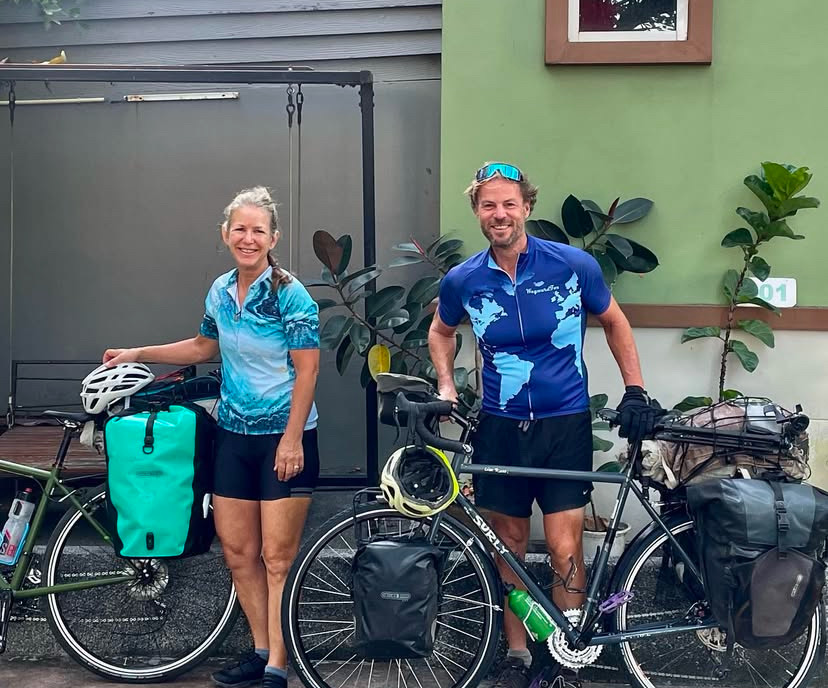
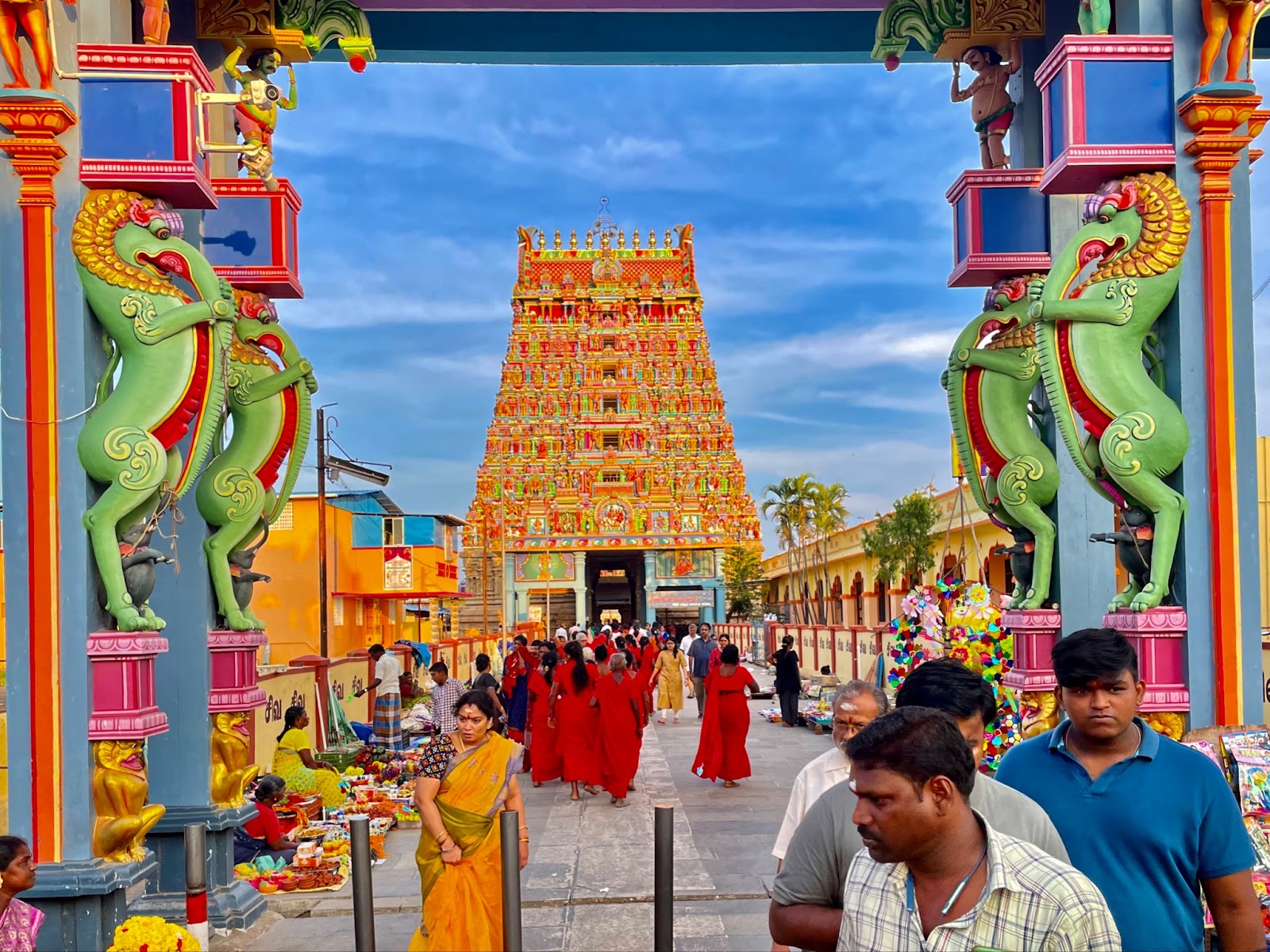
We shared a road through the flowing rice fields, motorcycles, chickens, and water buffaloes across Cambodia to Na Trang, Vietnam before she left again, and I continued up the Pacific Coast to the Chinese border once more. Through northern Laos, down through Thailand into Malaysia and Singapore, catching ferries to clove and durian-scented Java with its 150 million people and 45 active volcanoes, to another ferry that took me to Bali before flying to Perth. From Perth I rode across the tree-less cell-less Nullarbor plains for weeks into kangaroo-dense Victoria and New South Wales, ending in architecturally gorgeous Sydney for a flight to Christchurch, New Zealand. I spent five weeks cycling down to Queenstown and back up to Auckland through Wellington for the eight hour flight to Chile. Kendra told me, to my surprise, “I’m going to cycle with you for six months in South America, but I can’t meet you until December.” It was October. I suddenly found myself with two more extra months on my hands.
(Insert photo at the longest straight road sign)
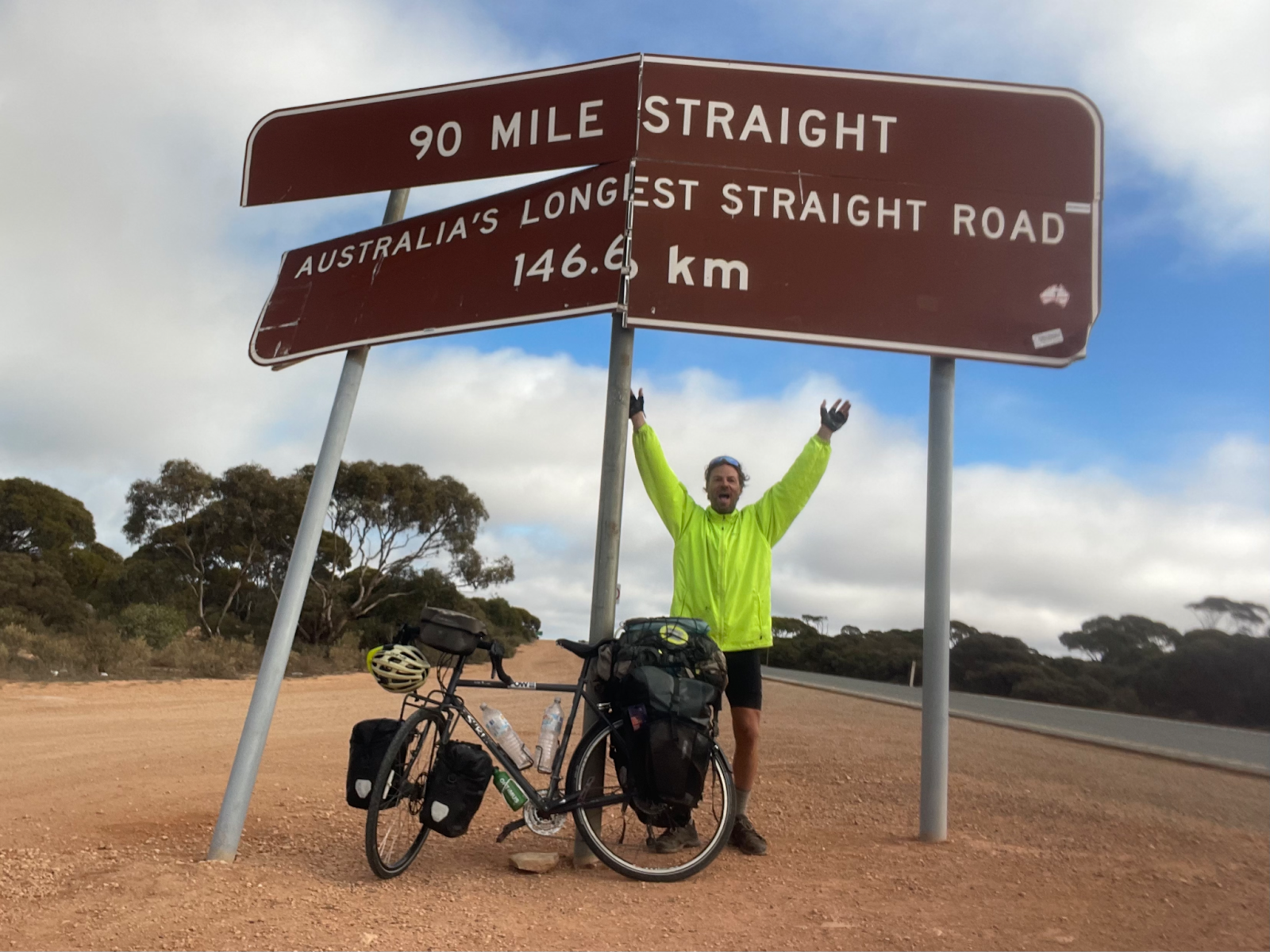
I only planned to spend around two and a half years cycling the world. But once again, I had imagined one day I would like to cycle the length of Latin America. I speak fluent Spanish and wanted to immerse myself in the experience of crossing the Latin counties by bicycle. The reasoning followed, “We’re here. We might as well go now.” The long ride took on a momentum of its own that seemed almost beyond my control.
By Santiago I had crossed all of the Earth’s latitudes and took a brief “vacation”. A week off to attend a wine festival and take a bus through the 29 tight switchbacks of “Los Caracoles” (the snails), the steeply winding road over the Andes to Mendoza, Argentina (to sample the Malbecs). I returned to Santiago to head south down the famous cycle-touring route the “Carretera Austral” (southern highway), through rain storms and scenic glaciated mountains to wind blasted Patagonia at Los Antiguos, Argentina. The ride continued down through snow in Tierra del Fuego, to Ushuaia at the end of the map just above Antarctica. I reunited with Kendra in El Calafate and El Chalten, just north of Ushuaia where the Patagonian spires of the Fitzroy Massif reach the sky.
(Insert photo of Kendra in front of the Fitzroy massif)
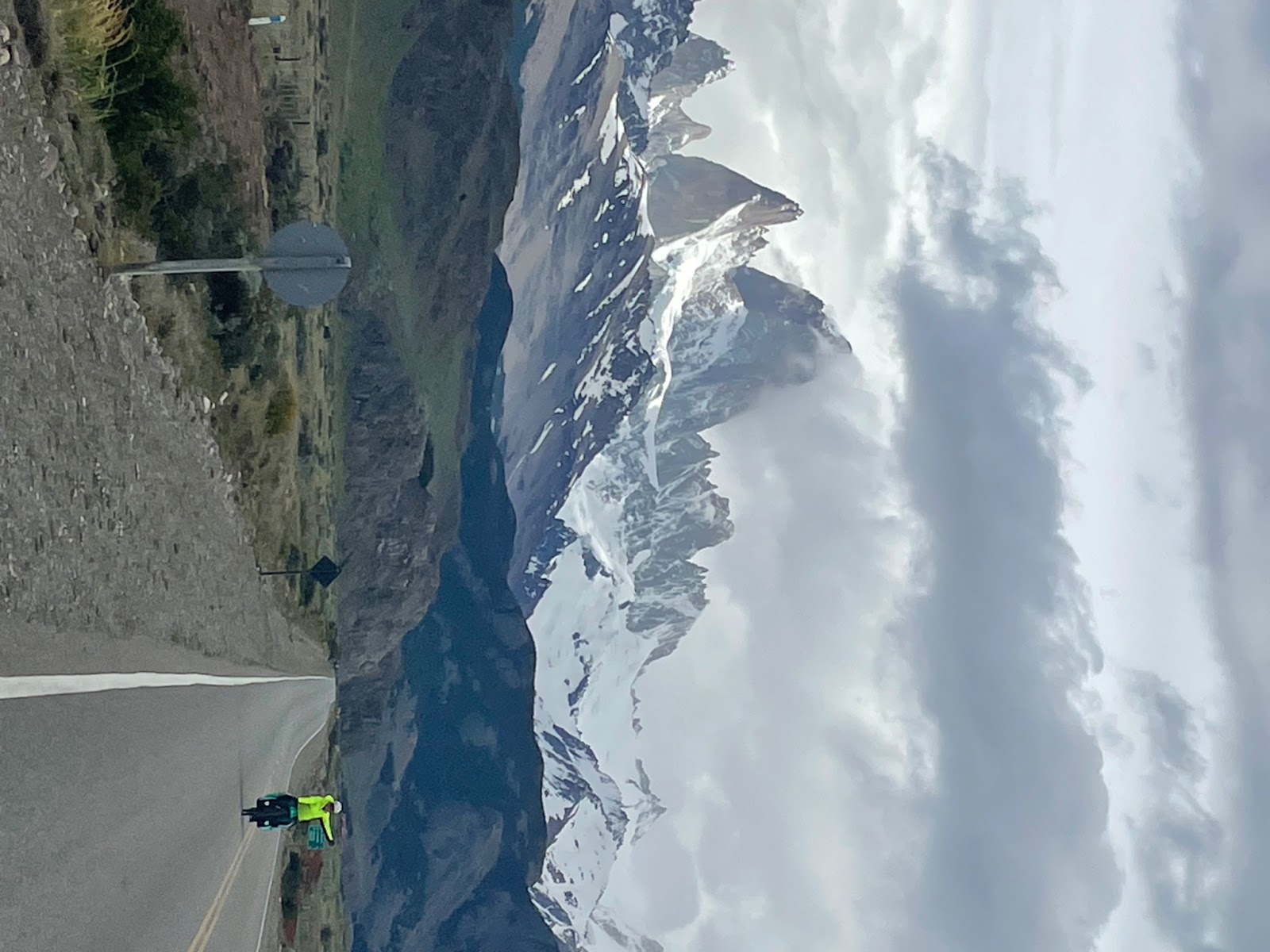
We rode Calleterra 40 up through Patagonian herds of Ganacos (the wild ancestors of llamas), and Emu-like Nandus, to turn east towards the changing landscape of the Patagonian plains with its oil rigs and wind turbines. We spent Christmas summer on the Atlantic coast in the oil town of Caleta Olivia before continuing up through Puerto Madryn, Plata del Mar and European-style Buenos Aires and the ferry to Uruguay. We crossed scorching Uruguay to Rio Grande do Sul, Brazil, and then crossed the rolling hills of Paraguay around Iguazu Falls to Asuncion. Back in redrock Salta, Argentina we accomplished one of the most challenging border crossings into Bolivia and spent three nights on the blinding white Uyuni Salt Flats, like a vast frozen lake, before continuing past rural altiplano homesteads with llamas and alpacas to La Paz, where Kendra would return home one last time.
After her departure, I completed the trip through the grueling but stunning Peruvian Andes, volcano-studded Ecuador, through the emerald green of Columbia to Cartagena, where I was tackled by two motorcyclists on a busy morning road and robbed of my cell phone–the only time I had an issue with crime during the entire trip. From Cartagena, I put Morpheus on a boat and sailed to Panama. From there, I rode through Costa Rica, and into Nicaragua, then started using some of the tourist buses between major destinations in Honduras and Guatemala for safety reasons. Mexico was perhaps my favorite of all the Latin countries. Gorgeous, safe, delicious, friendly, deep, all the way from Chiapas to the Baja peninsula, where I crossed back into the United States at the port of Mexicali in mid November. The end of the ride led through the Navajo Nation to the familiar roads of Colorado and then home, completing a garage-to-garage journey around the Earth in 1,379 bicycle travel days for 51,164 miles.
(Insert photo on the Uyuni Salt Flats)
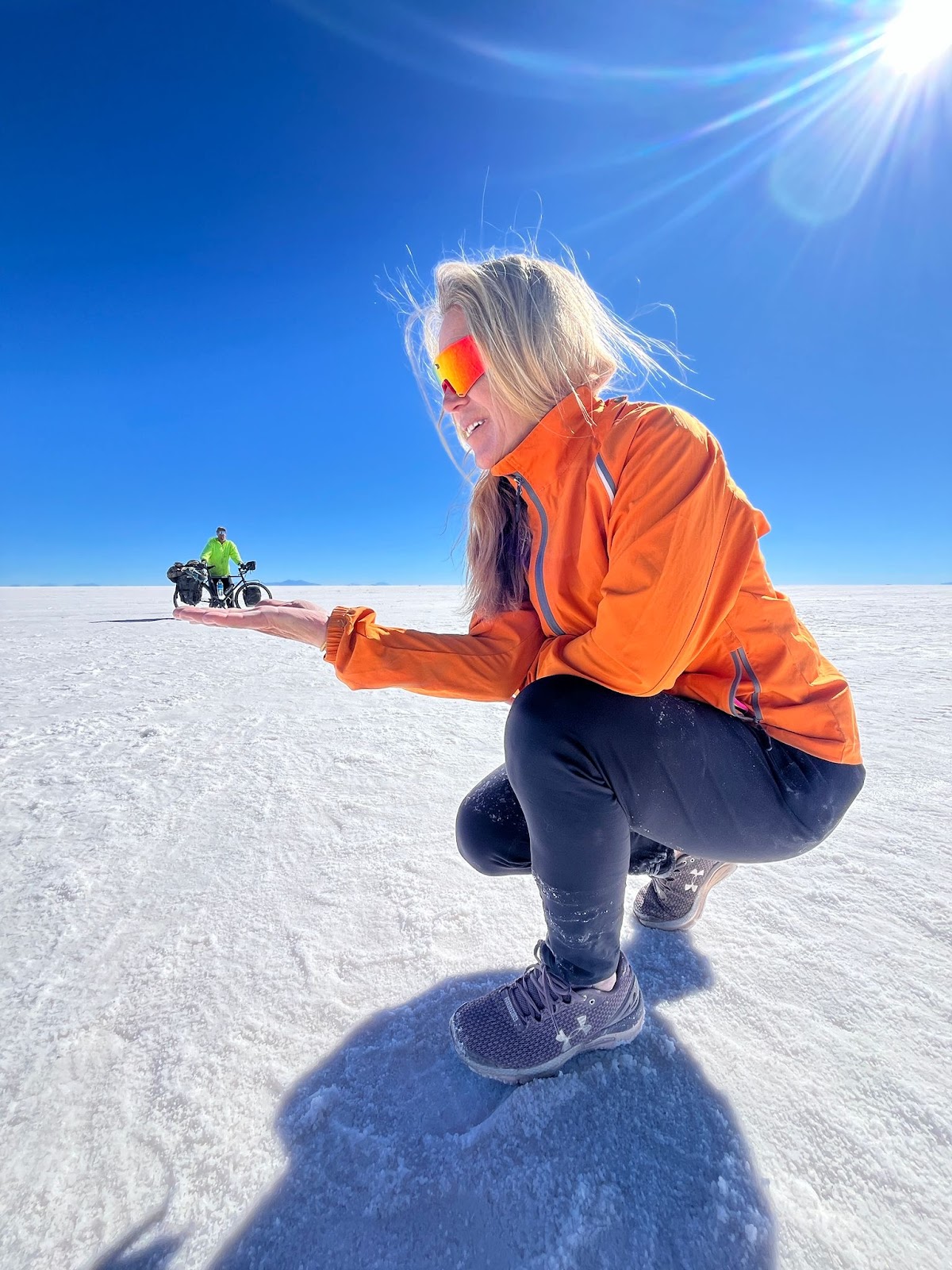
I cannot do all of the memories justice. Along the journey I learned that most people in the world are as friendly to a traveling stranger in another country as they would be to a long lost relative, and that the fear we are often taught to feel about the world out there is mostly unwarranted. Most of the world trades as much in goodwill as in money.
I learned it is a daily decision to view life as a gift and not as a series of debt payments. I learned to avoid looking at lists and top travel destinations because serendipity and personal fit with a place is often more satisfying than preconceptions. I learned through the measurement of my own physical motion across the Earth that it is much smaller than I imagined. By bicycle, India is not far from Greece, Latin America is like a cousin we have so much in common with yet know little about, Australians and New Zealanders share a common cultural parent with the US and Canada even though they are on the opposite side of the world. I learned the world changes faster than you can get around it, even if we ourselves feel much the same.
I was told by a woman in Romania, “When you tell your story, you need to tell about the inner journey and not just the outer one.” The journey changed me. The journey changed how I see everything now. There are an infinite number of pathways to the truth of the Universe, and true wealth is often finding a point where you have no more want for anything and no one left to impress. It is possible to just stop, watch the moments as they pass, and be grateful to be alive. It never required a journey around the world by bicycle. That’s only the form it took for me.
(Insert photo of friends upon the return home)
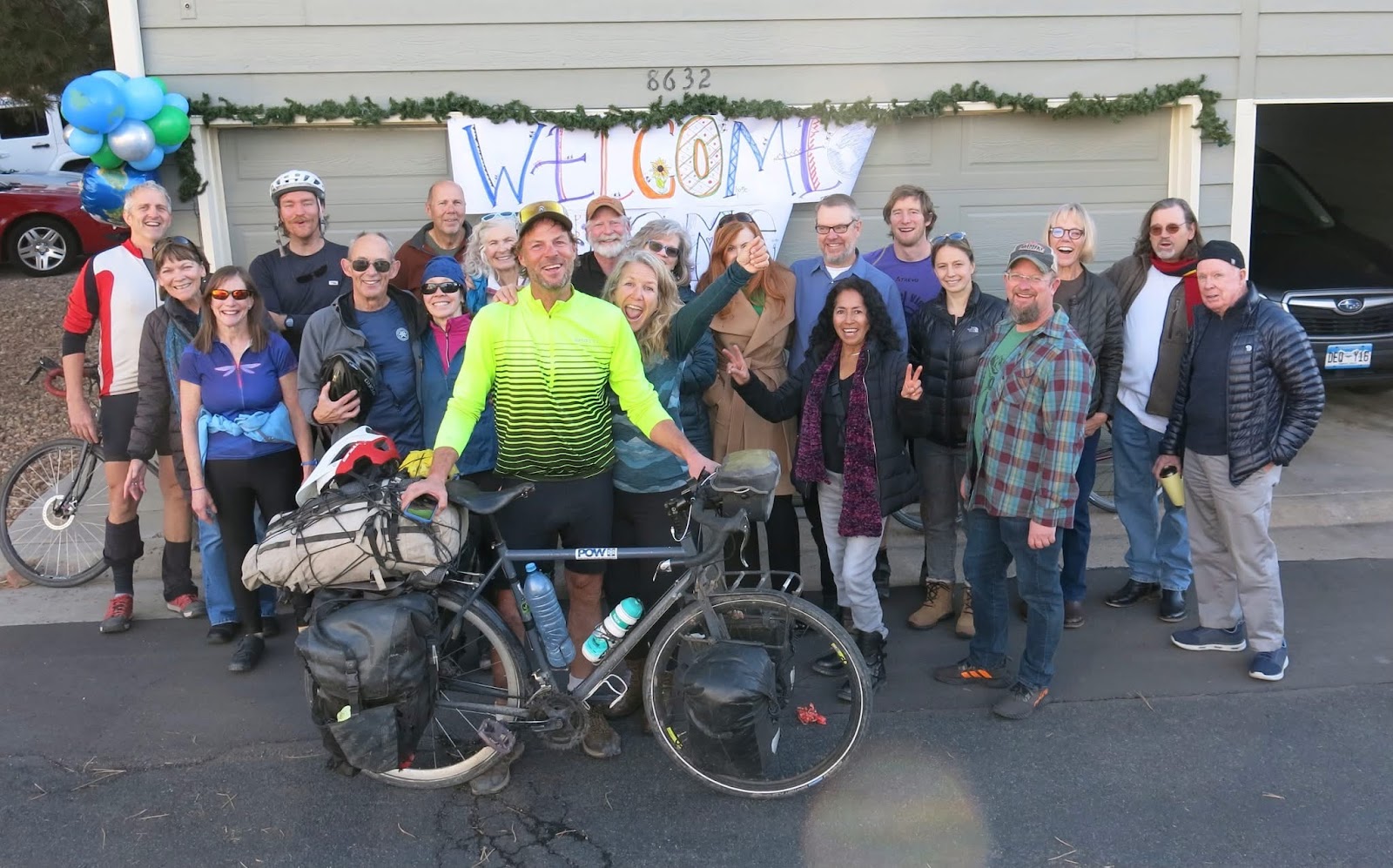
A technologist was once asked if he thought a machine would one day be invented that creates happiness. He quipped, “It already exists. It’s called a bicycle.” We live in a special moment in human history. There are roads across all countries, people are mostly on good terms everywhere, the climate remains stable enough to be predictable and the worst can be avoided, and we have phones that can keep us in touch with our loved ones daily across vast distances. And with something as simple as a bicycle, and the time and willingness to use it, an ordinary person can go out and see the world for themselves. But it’s not required. Sometimes it's good enough to just make that time to ride out to see another sunset, or to contemplate upon the stars once again.
(Insert photo of the Blue Marble)

Biking the Blue Marble.html
Displaying Biking the Blue Marble.html.





